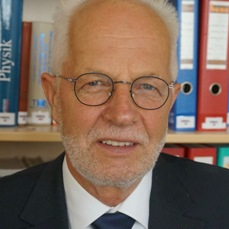Light Alloys and Their Applications
A special issue of Materials (ISSN 1996-1944).
Deadline for manuscript submissions: closed (30 April 2014) | Viewed by 235663
Special Issue Editor
Interests: light metals; biodegradable metals; corrosion-resistant alloys; phase transformations
Special Issues, Collections and Topics in MDPI journals
Special Issue Information
Dear Colleagues,
Over the last few decades, we have witnessed very successful developments in light metals design and processing. In particular, there has been a significant increase in the use of light alloys for various applications. Due to societal and economic pressures, the light-alloys community is called upon to provide novel high-performance materials with improved properties, as well as advanced processing technologies, which take sustainability and recycling aspects into particular consideration. The main focus of the forthcoming ‘Light Alloys and Applications’ issue is to present a comprehensive overview of the new developments. Recent advances in the science and technology of aluminum, magnesium, and titanium alloys will be addressed in various topics, which include alloy design, simulation and modeling, processing innovations, novel forming and joining technologies, corrosion and surface modifications, as well as sophisticated examples of successful applications in light-weight constructions, energy technologies, and medicine.
It is my pleasure to invite you to submit a manuscript for this special issue. Full papers, communications, and reviews are all welcome.
Peter J. Uggowitzer
Guest Editor
Manuscript Submission Information
Manuscripts should be submitted online at www.mdpi.com by registering and logging in to this website. Once you are registered, click here to go to the submission form. Manuscripts can be submitted until the deadline. All submissions that pass pre-check are peer-reviewed. Accepted papers will be published continuously in the journal (as soon as accepted) and will be listed together on the special issue website. Research articles, review articles as well as short communications are invited. For planned papers, a title and short abstract (about 100 words) can be sent to the Editorial Office for announcement on this website.
Submitted manuscripts should not have been published previously, nor be under consideration for publication elsewhere (except conference proceedings papers). All manuscripts are thoroughly refereed through a single-blind peer-review process. A guide for authors and other relevant information for submission of manuscripts is available on the Instructions for Authors page. Materials is an international peer-reviewed open access semimonthly journal published by MDPI.
Please visit the Instructions for Authors page before submitting a manuscript. The Article Processing Charge (APC) for publication in this open access journal is 2600 CHF (Swiss Francs). Submitted papers should be well formatted and use good English. Authors may use MDPI's English editing service prior to publication or during author revisions.
Keywords
- alloy design
- simulation and modeling
- casting and forming technologies
- joining processes
- corrosion and surface modification
- mechanical and electrochemical properties
- applications in light-weight
- transport, and energy systems
- bio-medical applications
- recycling and sustainability






